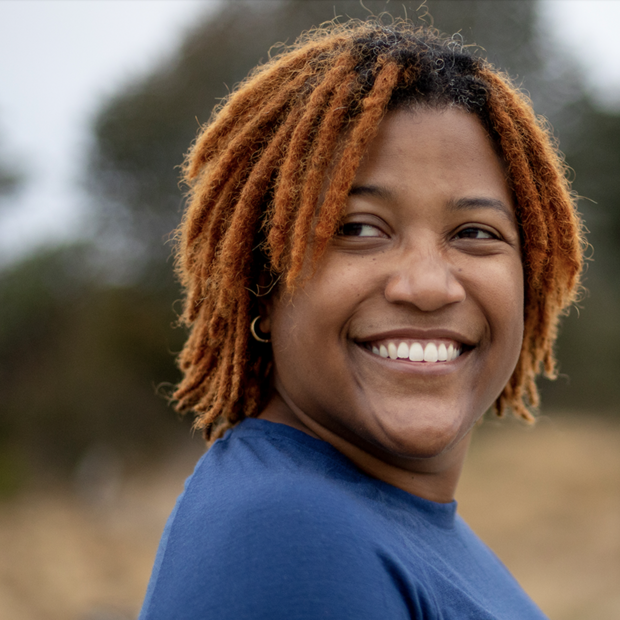My initial search revealed that while yes, there were many running groups in Seattle, there didn’t seem to be any group where I would feel like I belonged; almost every one I found was all white. That’s when I received a DM from Club Seattle Runners Division, or CSRD, on Instagram inviting me to join them for a Monday-night run. One of the co-founders even gave me his phone number to begin helping me find my way around the city. When I finally showed up for my first run with CSRD on Global Running Day in June, I knew that I had found my people.
The CSRD community welcomed me with open arms, and it was thanks to them that I felt a sense of belonging as I continued to adjust to this new place. Two co-founders in particular, Ashley Davies and David Jaewon Oh, have become close friends, and I’m continuously inspired by their creativity and commitment to introducing new people into the sport.
Ashley and Jaewon both helped start CSRD in 2017, to create a space of joyful movement for all paces and all faces, breaking from the more traditional idea of long-distance running as a sport for thin, fast white people. Several nights a week, the racially diverse group gathers and then gets moving, using running as a vehicle for personal transformation and social change.
CSRD isn’t alone. Groups like it have cropped up in cities across the nation, including in New York, where I founded Harlem Run in 2013. I had run my first marathon in 2012, and, in my training and on the starting line, realized that I was one of the only Black people participating. Running was changing my life for the better, and I wanted to share that experience with more people like me. I founded Harlem Run to be a running movement that centers Black and brown people. Collectively, groups like Harlem Run and CSRD are changing the narrative of who long-distance running is for and helping to address some of the obstacles that prevent people of color from getting and remaining active.
One obstacle is the lack of a safe space and clean environment in which to do so. On this episode of Out & Back, I co-host a walk in celebration of Juneteenth in Seattle’s historic Central District, once a center of Black culture, commerce and entertainment.
In fact, for more than 150 years – before Washington was even a state – Black people have called the Central District home. Manuel Lopes, Seattle’s first black resident, businessman, and property owner, arrived there in 1858.
Black-owned and -operated businesses that flourished along East Madison Street in the early 1900s included barber shops and restaurants, a fuel yard, a drug store, a hotel, and a theater. Churches and cultural organizations were also established in and near the East Madison district.
After World War II, the Central Area, as it was known then, became home to most of Seattle's growing Black population because of housing discrimination and restrictive covenants that barred people of color from buying homes in most other areas of the city.
However, since then, this once-redlined neighborhood has experienced multiple waves of gentrification and displacement. In the 1970s, more than 73 percent of the Central District’s residents were Black. Today that number is down to 18 percent, while the white population has climbed to nearly 60 percent. (source) “There are fewer and fewer places for people to congregate in the commons; the fabric of Black cultural production in the Central District, from imagination to presentation, is disintegrating.” (source)
Redlining did not just affect Black people's ability to purchase homes and acquire wealth, it also contributed to health disparities, including a disparity in who moves, runs, walks, hikes and cycles.
Even with the rapid gentrification, the legacy of redlining and a lack of resources continue to shape behavior in the Central District. Heat maps that show movement activity in a particular place (running, walking, cycling, etc.) align with redlining maps; there is considerably less heat, or movement, in historically redlined areas than in areas lined green or blue, highly resourced and historically reserved for white people.
Check it out here: https://www.strava.com/heatmap#12.22/-122.31323/47.59831/bluered/all.
Compare heat-map data in the Central District with that surrounding the historically white Green Lake neighborhood, for example. The contrast is stark and illuminating.
Through our movement on this episode, we are creating more heat and reclaiming the Central District as our space.
For more from this episode, listen to the Out & Back podcast. You can find it on Spotify, Apple Podcasts, Amazon or wherever you get your podcasts.


